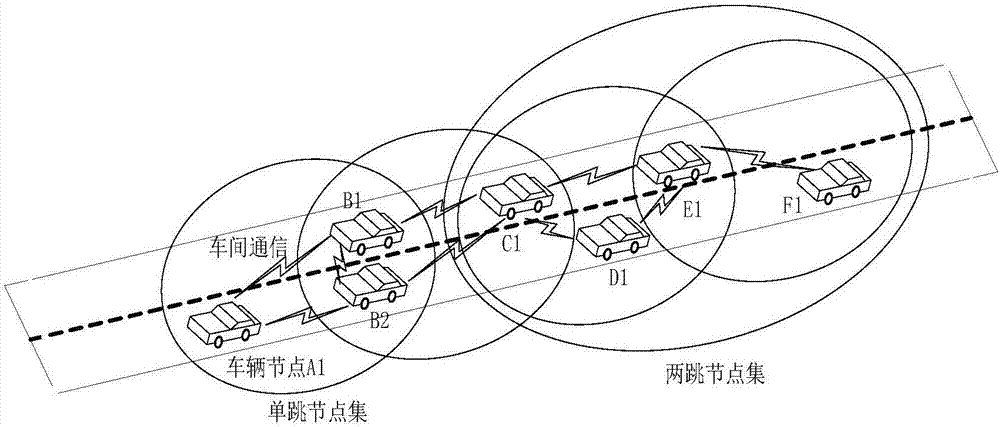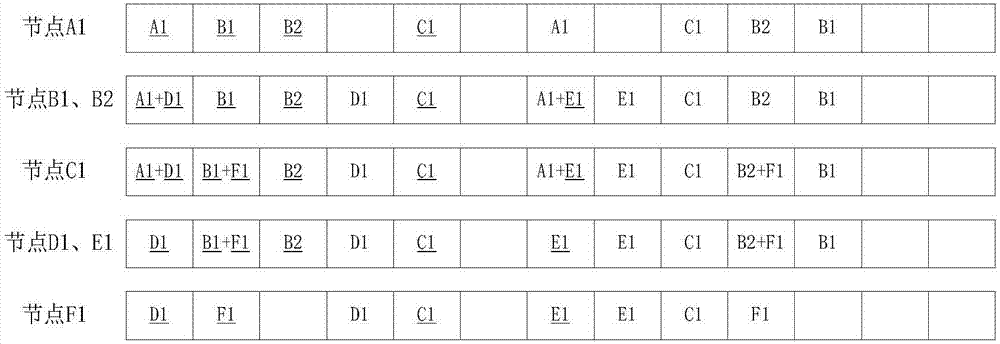A Vehicular Network Access Method Based on Adaptive Time Slot Allocation
A time slot allocation and access method technology, which is applied in data exchange through path configuration, electrical components, transmission systems, etc., can solve the problems of reducing access delay and waste of time slots in TDMA methods, so as to reduce access time Delay, increase the probability of successful transmission, and the effect of performance improvement
- Summary
- Abstract
- Description
- Claims
- Application Information
AI Technical Summary
Problems solved by technology
Method used
Image
Examples
Embodiment Construction
[0044] The specific implementation of the vehicular network access method based on adaptive time slot allocation proposed by the present invention will be described in detail below in conjunction with the embodiments and the accompanying drawings.
[0045] to attach figure 1 As shown as an example, a vehicle ad hoc network is composed of nodes A1, B1, B2, C1, D1, E1, and F1. Wherein, the single-hop node set or the two-hop node set composed of each node is shown in Table 1. It is worth noting that the vehicle nodes do not necessarily exist in only one THS. The B1 and B2 nodes in THS1 are also included in THS2. The C1, D1, and E1 nodes in THS2 also belong to THS3. The C1 node is shared by three two-hop node sets. .
[0046] Table 1. Node Set Examples
[0047] node set label
vehicle member node
OHS1
A1, B1, B2
OHS2
B1, B2, C1
OHS3
C1, D1, E1
OHS4
E1, F1
THS1
A1, B1, B2, C1
THS2
B1, B2, C1, D1, E1
...
PUM
 Login to View More
Login to View More Abstract
Description
Claims
Application Information
 Login to View More
Login to View More - R&D
- Intellectual Property
- Life Sciences
- Materials
- Tech Scout
- Unparalleled Data Quality
- Higher Quality Content
- 60% Fewer Hallucinations
Browse by: Latest US Patents, China's latest patents, Technical Efficacy Thesaurus, Application Domain, Technology Topic, Popular Technical Reports.
© 2025 PatSnap. All rights reserved.Legal|Privacy policy|Modern Slavery Act Transparency Statement|Sitemap|About US| Contact US: help@patsnap.com



